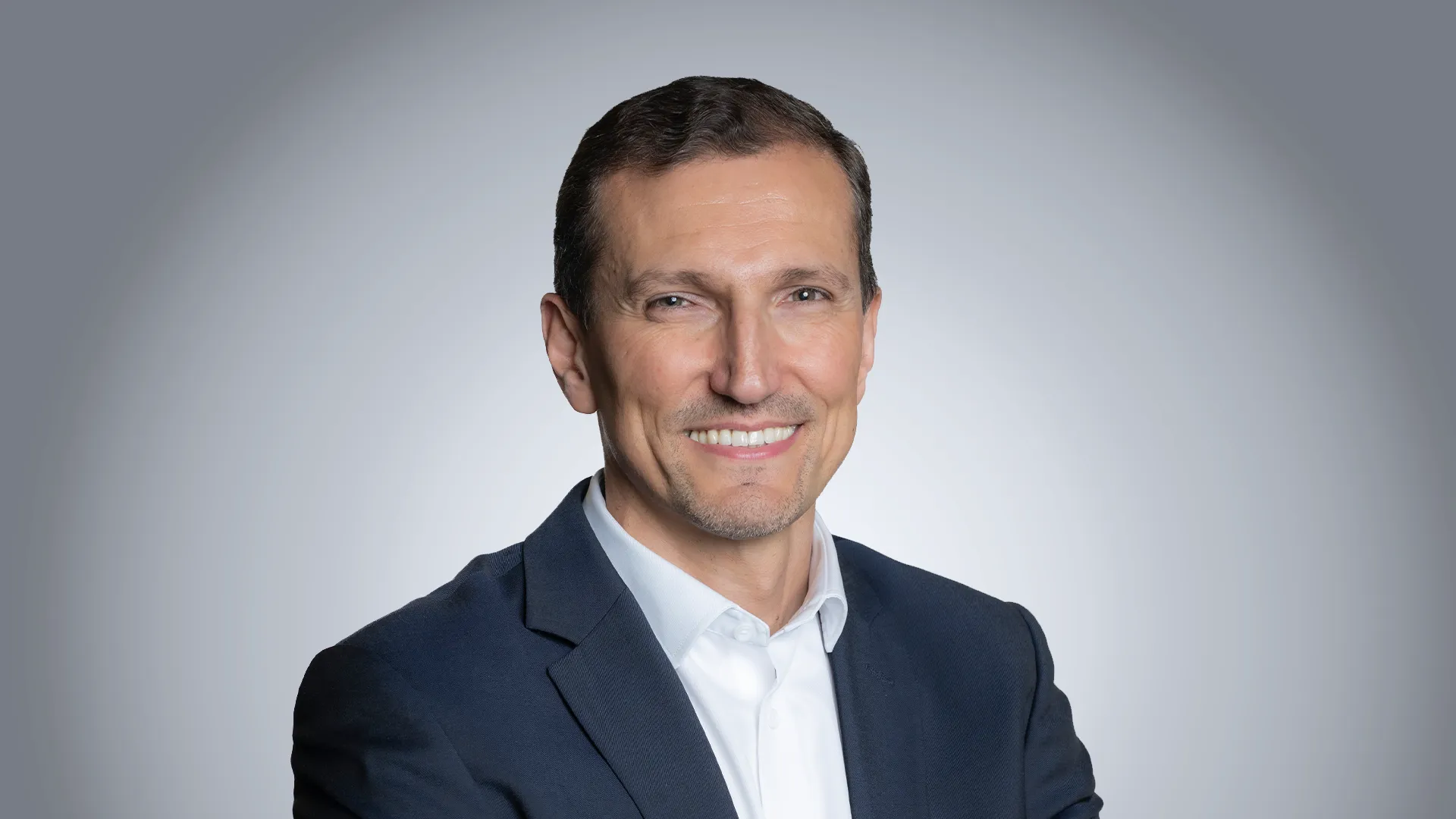 Credit: Adobe Stock
Credit: Adobe StockFrom Compliance to Performance: Rethinking Tax Strategy with Ayming
Albertino Dos Santos on helping clients manage tax risks, optimise asset performance, and adapt to shifting regulatory landscapes
October 30, 2025Real Estate
Written by:Rory Hickman
Key Takeaways
- Real estate stakeholders face growing uncertainty as evolving tax regulations and local disparities make budgeting increasingly complex.
- Digitalisation and AI are reshaping how property tax data is analysed, though human expertise remains essential for complex cases.
- Cross-border differences in tax frameworks highlight the need for greater adaptability and knowledge sharing across European markets.
Ayming is a top international consultancy group specialising in business performance, with expertise in property tax, asset management, and digital solutions, supporting clients across 14 countries while helping them navigate the increasing regulatory complexity and market uncertainty putting pressure on real estate performance and compliance.
Following his participation in Europe GRI 2025 in Paris, Ayming’s Albertino Dos Santos, Associate Director - Tax & Finance Consulting Department, spoke to the GRI Institute to share his key takeaways from discussions at the summit and answer some questions about the company’s role in property taxation, sector challenges, use of digital tools and AI, international tax differences.

Ayming works across several areas of business performance consulting - how does property taxation and asset management fit within this wider strategy, and what key challenges do clients face in navigating today’s complex regulatory landscape?
At Ayming, we support our clients throughout the lifecycle of a real estate asset: from development (with urban planning taxes such as the development tax or preventive archaeological tax) to ownership and occupation (property tax, CFE, etc.).
These taxes, which are becoming increasingly burdensome, can undermine the profitability of a project or location. This is particularly true as their evolution often depends on external factors, such as the spectacular increases recently observed in certain major cities.
The challenges are numerous:
This is where Ayming steps in: transforming this complexity into visibility, securing tax filings, and preserving the profitability of our clients’ projects.
From your perspective, which property types or sectors tend to benefit the most from strategic tax optimisation, and why?
Rather than speaking about tax optimisation, I prefer to talk about mapping risks and opportunities.
In this context, certain sectors deserve particular attention:
Logistics and data centres: The complexity of taxation rules and reporting models raises many questions.
Offices and retail: Highly taxed, but sometimes eligible for significant reliefs.
Our role is to secure tax filings, anticipate changes, and rely on accurate documentation monitoring. Because, depending on the municipality or even the instructing officer, the answers can vary significantly.
Knowing the local terrain is a key advantage for our clients.

With tools like Ayming Map, digital transformation is clearly a priority for Ayming - how do you see the rise of advanced data analytics and AI reshaping the way asset owners manage property taxes, optimise performance, and control costs?
For over 8 years, we’ve been developing digital tools for our clients, such as Ayming Map, which allows the management of local taxes and access to multiple property-related information (cadastre, transactions, building permits, etc.).
These tools provide:
I am deeply convinced that AI will accelerate our audit missions, democratise the understanding of tax calculations, and help identify the most obvious anomalies more quickly, provided it is used wisely, especially in terms of confidentiality.
As Ayming expands internationally, what are some of the key differences between property tax frameworks across markets, and how do you adapt your approach accordingly?
Tax frameworks differ greatly from one country to another.
In Spain or Portugal: Similar to the French model, but less complex, offering fewer levers.
In Belgium: More technical calculation rules, but with real opportunities for some taxpayers.
In the United States: A very promising and key federal tax deduction for energy-efficient commercial buildings will sunset in 2026 for projects beginning construction after June 30, 2026.
Following your participation at Europe GRI 2025, what are some of the key takeaways from your time at the summit?
Europe GRI is a must-attend event that brings together the leading figures in real estate, offering a unique opportunity to engage with decision-makers, investors, and experts from across the industry.
What I found most valuable was:
Thanks for your time Albertino!
Learn more about Ayming here.
Following his participation in Europe GRI 2025 in Paris, Ayming’s Albertino Dos Santos, Associate Director - Tax & Finance Consulting Department, spoke to the GRI Institute to share his key takeaways from discussions at the summit and answer some questions about the company’s role in property taxation, sector challenges, use of digital tools and AI, international tax differences.

Ayming’s Associate Director - Tax & Finance Consulting Department, Albertino Dos Santos, shares his key takeaways from Europe GRI 2025. (Ayming)
Ayming works across several areas of business performance consulting - how does property taxation and asset management fit within this wider strategy, and what key challenges do clients face in navigating today’s complex regulatory landscape?
At Ayming, we support our clients throughout the lifecycle of a real estate asset: from development (with urban planning taxes such as the development tax or preventive archaeological tax) to ownership and occupation (property tax, CFE, etc.).
These taxes, which are becoming increasingly burdensome, can undermine the profitability of a project or location. This is particularly true as their evolution often depends on external factors, such as the spectacular increases recently observed in certain major cities.
The challenges are numerous:
- Meeting tight reporting deadlines;
- Dealing with unilaterally changing tax rates;
- Managing changes in tax methods due to shifting laws and case law;
- Keeping track of increasingly complex relief measures.
This is where Ayming steps in: transforming this complexity into visibility, securing tax filings, and preserving the profitability of our clients’ projects.
From your perspective, which property types or sectors tend to benefit the most from strategic tax optimisation, and why?
Rather than speaking about tax optimisation, I prefer to talk about mapping risks and opportunities.
In this context, certain sectors deserve particular attention:
Logistics and data centres: The complexity of taxation rules and reporting models raises many questions.
Offices and retail: Highly taxed, but sometimes eligible for significant reliefs.
Our role is to secure tax filings, anticipate changes, and rely on accurate documentation monitoring. Because, depending on the municipality or even the instructing officer, the answers can vary significantly.
Knowing the local terrain is a key advantage for our clients.

“At Ayming, we support our clients throughout the lifecycle of a real estate asset: from development to ownership and occupation,” explains Albertino. (Adobe Stock)
With tools like Ayming Map, digital transformation is clearly a priority for Ayming - how do you see the rise of advanced data analytics and AI reshaping the way asset owners manage property taxes, optimise performance, and control costs?
For over 8 years, we’ve been developing digital tools for our clients, such as Ayming Map, which allows the management of local taxes and access to multiple property-related information (cadastre, transactions, building permits, etc.).
These tools provide:
- a clear, real-time view;
- quick detection of simple anomalies;
- valuable assistance with tax monitoring.
I am deeply convinced that AI will accelerate our audit missions, democratise the understanding of tax calculations, and help identify the most obvious anomalies more quickly, provided it is used wisely, especially in terms of confidentiality.
As Ayming expands internationally, what are some of the key differences between property tax frameworks across markets, and how do you adapt your approach accordingly?
Tax frameworks differ greatly from one country to another.
In Spain or Portugal: Similar to the French model, but less complex, offering fewer levers.
In Belgium: More technical calculation rules, but with real opportunities for some taxpayers.
In the United States: A very promising and key federal tax deduction for energy-efficient commercial buildings will sunset in 2026 for projects beginning construction after June 30, 2026.
Following your participation at Europe GRI 2025, what are some of the key takeaways from your time at the summit?
Europe GRI is a must-attend event that brings together the leading figures in real estate, offering a unique opportunity to engage with decision-makers, investors, and experts from across the industry.
What I found most valuable was:
- The breadth and depth of discussions, spanning legal and economic issues, ESG, and technological innovation.
- The high calibre of networking, both during the sessions and in more informal settings, which fosters genuine professional and personal connections.
- The forward-looking nature of the conversations, particularly around AI, generational shifts, and the factors that make an investment truly promising.
Thanks for your time Albertino!
Learn more about Ayming here.